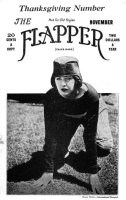
Worksheets and No Prep Teaching Resources
Reading Comprehension Worksheets
The 1920's

The 1920's
 Worksheets and No Prep Teaching Resources Reading Comprehension Worksheets The 1920's |
 The 1920's |
| edHelper's suggested reading level: | grades 9 to 12 | |
| Flesch-Kincaid grade level: | 8.98 |
|
The 1920s - How They Roared
By Toni Lee Robinson |

|
 1 The 1920s have been called the Roaring Twenties, the Age of Intolerance, the Jazz Age, and the Age of Wonderful Nonsense. The people of the 20s were known as the Lost Generation. The fact that one ten-year span generated so many colorful labels is a clue to the spirit of the era. By any name, the decade was a curious episode in American history.
1 The 1920s have been called the Roaring Twenties, the Age of Intolerance, the Jazz Age, and the Age of Wonderful Nonsense. The people of the 20s were known as the Lost Generation. The fact that one ten-year span generated so many colorful labels is a clue to the spirit of the era. By any name, the decade was a curious episode in American history. |
Create Weekly Reading Books
Prepare for an entire week at once! |
| Leave your feedback on The 1920s - How They Roared (use this link if you found an error in the story) |
 |
The 1920's
|
 |
High School Reading Comprehensions and High School Reading Lessons
|
 |
United States
|
|
|
 | Fifty States Theme Unit |
 |
Document Based Activities |